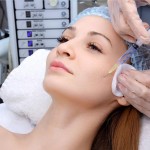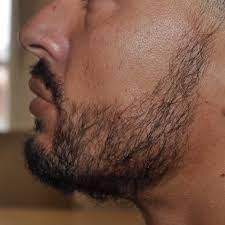Beard transplant surgery has become increasingly popular among men seeking to enhance their facial hair. Dubai, known for its advanced medical facilities and skilled practitioners, has emerged as a top destination for this cosmetic procedure. Here, we provide a comprehensive step-by-step overview of Beard Transplant in Dubai, highlighting what to expect from the initial consultation to the final results.
Initial Consultation
The journey begins with a consultation with a qualified hair transplant surgeon. During this session, the surgeon assesses the patient's beard growth pattern, hair density, and overall health. The patient discusses their expectations, desired beard style, and any concerns they may have. The surgeon then provides a customized plan tailored to the individual's needs, including the number of grafts required and the estimated cost.
Pre-Surgery Preparation
Once the decision to proceed with the surgery is made, the patient undergoes a series of pre-operative steps:
Medical Evaluation:
A thorough medical check-up ensures the patient is fit for surgery.
Medication Guidance:
The patient may be advised to avoid certain medications, such as blood thinners, in the weeks leading up to the procedure.
Lifestyle Adjustments:
Smoking and alcohol consumption may need to be reduced or eliminated to promote optimal healing.
Harvesting Donor Hair
On the day of the surgery, the process begins with the harvesting of donor hair. The back of the scalp, known for its dense and resilient hair, is typically used as the donor site. There are two main techniques for harvesting hair:
Follicular Unit Extraction (FUE):
Individual hair follicles are extracted using a micro-punch tool. This method is minimally invasive and leaves tiny, barely noticeable scars.
Follicular Unit Transplantation (FUT):
A strip of the scalp is removed, and individual follicles are dissected from it. This technique can yield a larger number of grafts but results in a linear scar.
Graft Preparation
The harvested follicles are carefully prepared for transplantation. Technicians separate the follicles under a microscope, ensuring they remain healthy and viable. The number of grafts needed depends on the desired beard density and coverage, typically ranging from 2,000 to 3,000 grafts.
Creating the Recipient Area
The surgeon designs the beard by marking the areas where the grafts will be placed. Precision is crucial to ensure a natural-looking result that complements the patient’s facial features. Tiny incisions are made in the recipient area, following the natural growth pattern of beard hair.
Transplantation of Hair Follicles
The prepared grafts are meticulously implanted into the recipient sites. This step requires precision and artistry to achieve a natural and aesthetically pleasing beard. The surgeon ensures that the direction, angle, and density of the implanted hair match the patient’s existing beard hair.
Post-Surgery Care
After the surgery, the patient receives detailed post-operative care instructions:
Medications:
Pain relievers, antibiotics, and anti-inflammatory drugs may be prescribed to manage discomfort and prevent infection.
Cleaning:
Gentle cleaning of the transplant area is essential to avoid dislodging the grafts.
Avoiding Physical Strain:
The patient should refrain from strenuous activities and avoid direct sunlight on the treated area.
Recovery and Growth
Recovery from a beard transplant surgery typically takes a few days to a week. Swelling and redness in the transplant area are common and subside within a few days. The transplanted hair will initially shed within two to three weeks, a normal part of the hair growth cycle. New hair growth usually starts within three to four months, with full results visible in about nine to twelve months.
Follow-Up Appointments
Regular follow-up appointments with the surgeon are crucial to monitor progress and address any concerns. These visits help ensure the transplanted hair is growing as expected and that the patient is satisfied with the results.
Conclusion
Beard transplant surgery in Dubai offers men the opportunity to achieve a fuller, well-defined beard. With advanced techniques and skilled surgeons, the process is safe, effective, and tailored to individual needs. By understanding the step-by-step process, patients can approach the procedure with confidence and look forward to enjoying the benefits of a more robust and aesthetically pleasing beard.






Comments